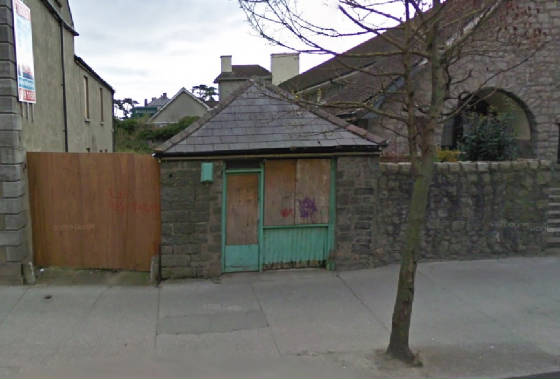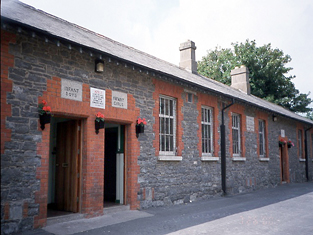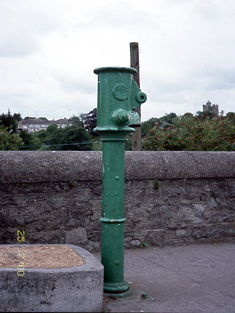|
|
North Street Swords Dublin - History A History Of Swords Co. Dublin - The Village Pump
Next to the Court House was a nice two storey house with orchard behind, which was usually rented to Policemen. Beside
this house was the only semblance of a Town Hall in the town. It was a long one storey building in a rather decayed condition,
with its gable end to the street and a green paddock on one side. It originally was a workshop and forge for a coach builder
and when this business closed it was used at first for football club meetings and local elections, committee meetings, etc.
It was then renovated a bit and the local football club used to entertain visiting teams there with a half barrel or
barrel of porter which was the recognised way of treating the visitors and the local team.
When the Gaelic League started, they had no classrooms, so they held them in the old forge and did some repairs to floors,
lighting, etc., to make it presentable and after this Ceilidhes were regularly held there and the porter was banned. The local
Brass Band also used it as a practising room. Later when the Earnegie Library was built, these entertainments were transferred
there.[ This building is empty today and it's last use was a bookies owned by Bobby Savage]
Next to the old forge there was a good cut stone house and out offices once occupied by a Protestant Leader called Cloney.
He had a hardware business. When he died, Mrs. Smylie'.s Birds Nest started an orphanage or boarding school for Protestant
boys.
There were about 40 boys in it. Below this was a neat row of brick and stone cottages, let to tenants and one two storey
house which was once the Post Office. Next to these were two nicely designed teachers' residences of the usual type. Red brick
and stone and the entrance to the Girls', schools was beside these houses.
Beyond this entrance was a family named Connor, for many generations coach builders in the town. Two of the daughters
were teachers and the old widow kept a sweet shop for the use of the girls in school playground adjoining.
Below this were a row of delapidated one storey cottages although they were slated. Below this row of cottages was a
picturesque two storey
• thatched cottage with dormer windows in the thatch. This was McCloud's public house. Nothing exciting ever happened in this pub. Then there was a stone wall for about 100 yds. and then a Gothic looking brick and stone house with pointed windows which may have been meant for a Protestant Sect Meeting house, but was occupied by another coach builder named Connor, a relation of the widow's family, at the school yard. They had a big workshop and outbuildings at the back and a field for training in young horses. This was the last house
on this east side.
|
||||||||
|
Next Page A History Of Swords-West Side, North End
|



